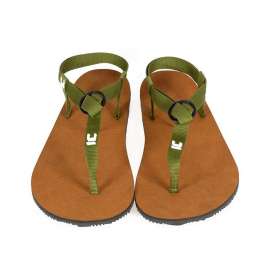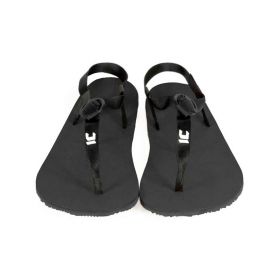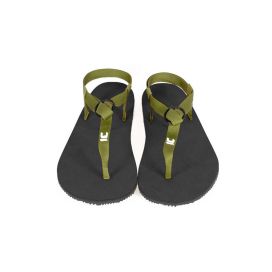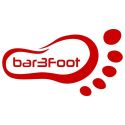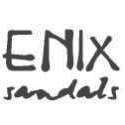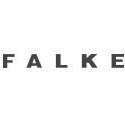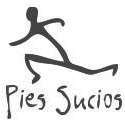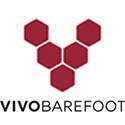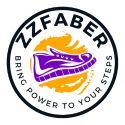No products
Prices are Management included
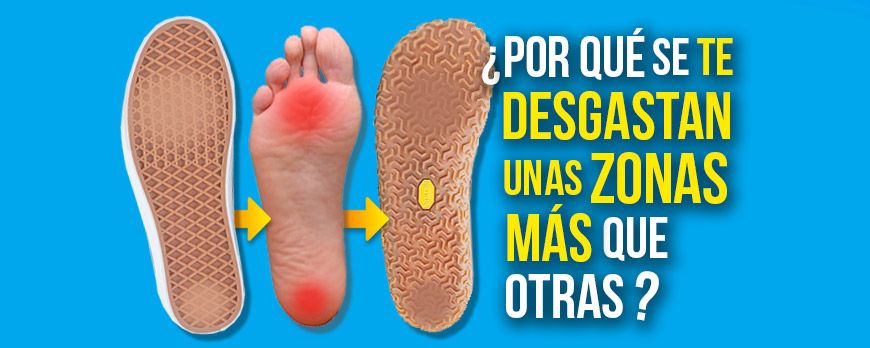
Why have my minimalists worn out more in some areas than in others?
If you ever ask me about the wear and tear on the soles of your shoes, you may be surprised by my answer.
As you know, minimalist shoes give your toes more room, don't modify the curves of your spine, weigh little, are flexible and help two fundamental things that are not given importance.
The first: to feel MORE of the ground.
With every step, your foot seeks to feel the ground for the stability that keeps you upright.
If your footing is not stable, you risk falling.
But if you're wearing conventional shoes, you have to step harder to overcome all those layers that keep you off the ground, so you can receive those signals.
By removing any kind of cushioning (drop, midsole, narrow last, ...), the foot gradually starts to re-learn and use all its muscles, ligaments and joints (together with the rest of the leg and hips) to land in a softer way.
In other words, with minimalist footwear it is NOT necessary to make as much force against the ground when walking, running or jumping.
The foot can already feel.
But this change is not immediate, it takes a slow transition time. Of going little by little.
It is not achieved from one day to the next, it can take months in some cases.
It is as if you had worn boxing gloves every day to hold a glass of water. To feel that you have a good grip, you would use MORE force than necessary.
Now imagine that you suddenly take them off and, with your bare hand (or a very thin glove), you use the same force to grab the glass.
You will most likely break it (the glass and the gloves) because there is NO barrier to overcome.
That's where the hand itself should gradually start to do less force, less tension.
But unfortunately you still have that learned strong and tense "gesture" that comes automatically as a result of having worn "gloves" for so many years.
The same case for your feet.
Even if you have changed to minimalist shoes, your feet are NOT yet adapted, so you still land in the same areas and just as hard as when you were wearing conventional shoes.
The most common areas and where the most force is usually applied with conventional shoes is in the heel and between the second and third toes.
The second thing: to know MORE about our feet.
Minimalist shoes hardly influence your feet, therefore, if your shoes wear more in some areas than in others, this helps you to see the state of your feet and to detect possible deficiencies: Which areas make or suffer more pressure, the mobility of your feet, the distribution of pressures...
If you have only been wearing minimalist shoes for a short time and your foot is not working properly, the sole of your shoes will wear unevenly.
(Wear is also influenced by the terrain you walk on, more abrasive or less abrasive).
Ideally, the wear should be even across the sole and the length of the foot. If not, it means that you are still in the process of readapting.
Right.
That's about as far as my answer goes.
One more thing.
If your feet don't work well, in order for them to improve faster, you will have to do more than just change to a minimalist shoe.
Although this is already an improvement in itself, the more time and attention you put into it, the sooner you will get results.
My favourite exercise for this is walking.
Yes, but barefoot.
And not just at home where the ground is smooth and even. But on uneven ground where the foot has to adapt to each step. This is much more interesting for your feet (and your brain).
You notice how the foot lands with the heel, but quickly the pressure passes through the outside of the foot to reach the forefoot area so that the step ends up coming out of the big toe.
And when you need something to protect them, the closest thing to this experience is a pair of minimalist sandals.
Like the Zauri Hanami, with a sole thickness of only 7 mm, for everyday use with a sole that lasts for many kilometres and with which you can change the strap quickly.
Also for children: Hanami Kids
Health starts with your feet.
Antonio Caballo.
Pd. About pressure distribution I told you about it here.
More exercises in this video, up to min 2'50".
Dejar un ComentarioDejar una respuesta
Blog categories
- Running Technique
- Shoes Review
- Scientific studies
- Nike and minimalist shoes
- Morton neuroma
- Bunions
- Podiatrists' opinion on...
- Claw toes, crowded toes,...
- Flat feet
- Runner's injuries, runner's...
- Sprained feet, ankle sprains
- Footwear for wide feet or...
- Heel and back pain
- Children's feet and...
- Circulation and bone...
- Knee pain, osteoarthritis,...
- Plantar fasciitis
Últimos Comentarios
Fernando Capellán
That Vivobarefoot lawsuit… and what happened nextLorena Cortés
This is what Nike did to Nadal's footFernando Capellán
They call it ugly... but everyone will...Antonio Caballo
The finger wristband: when fashion squeezes...

